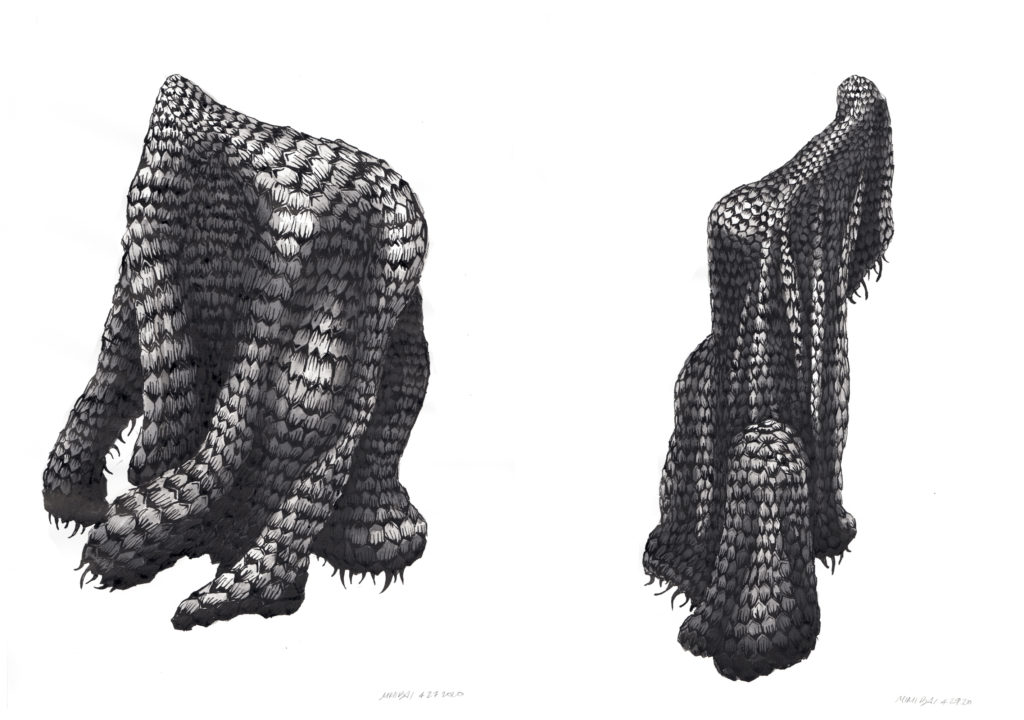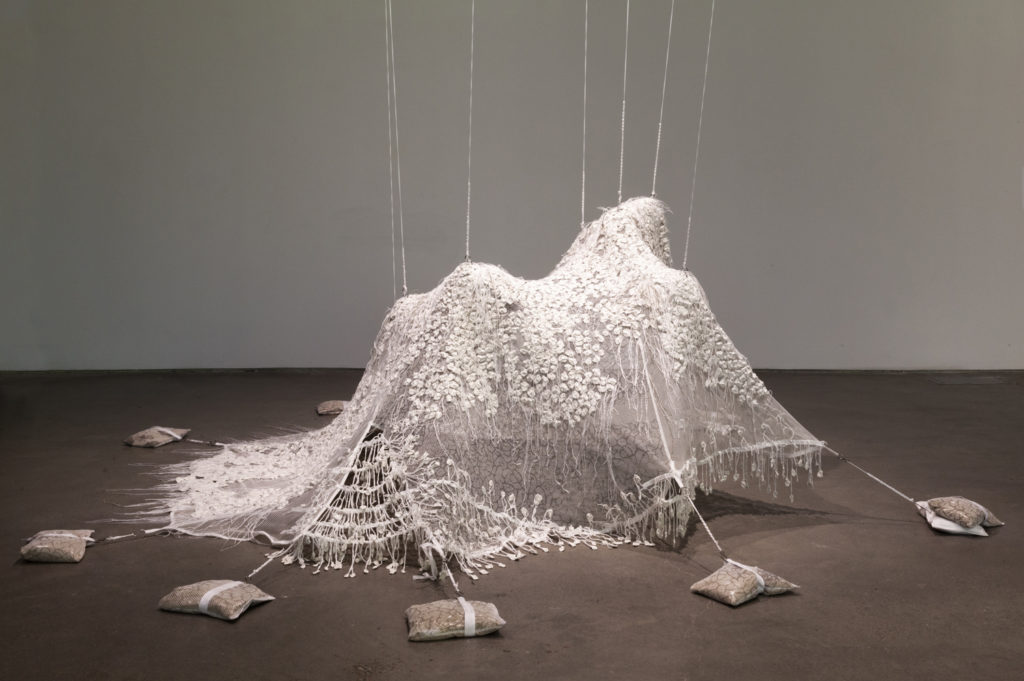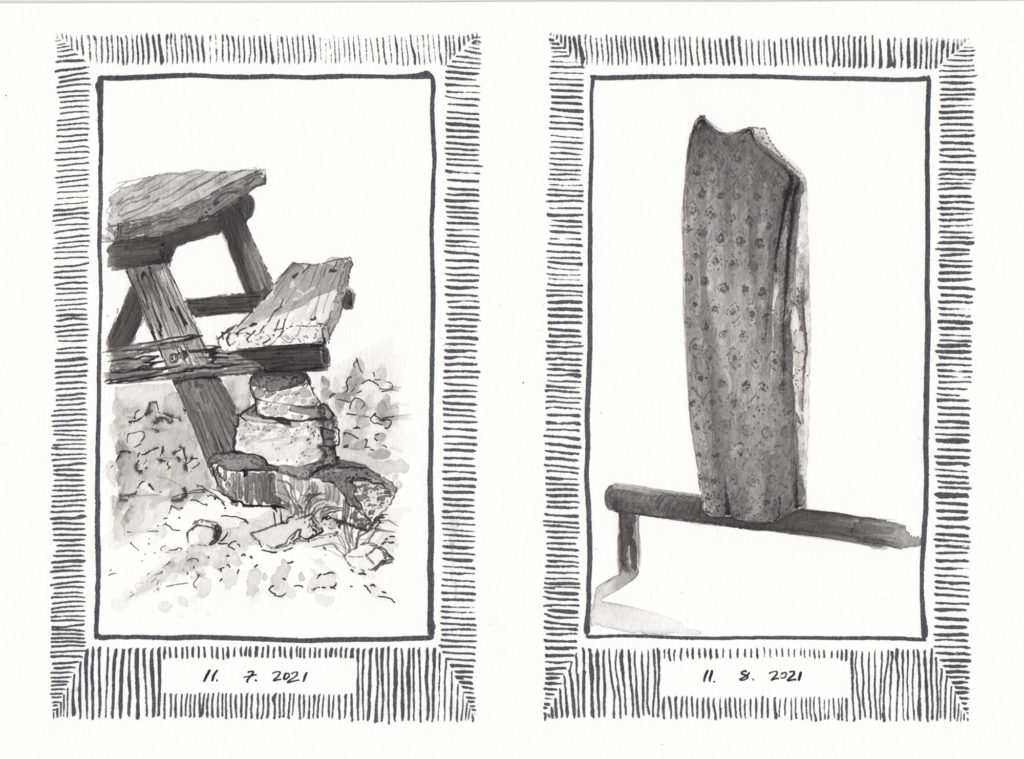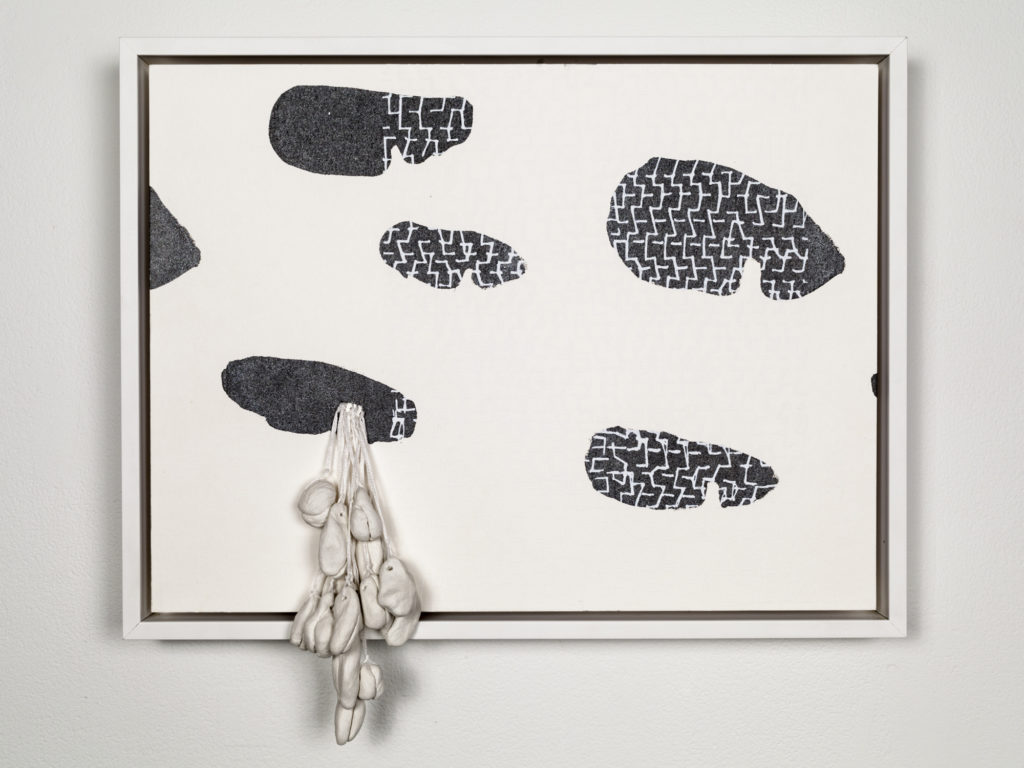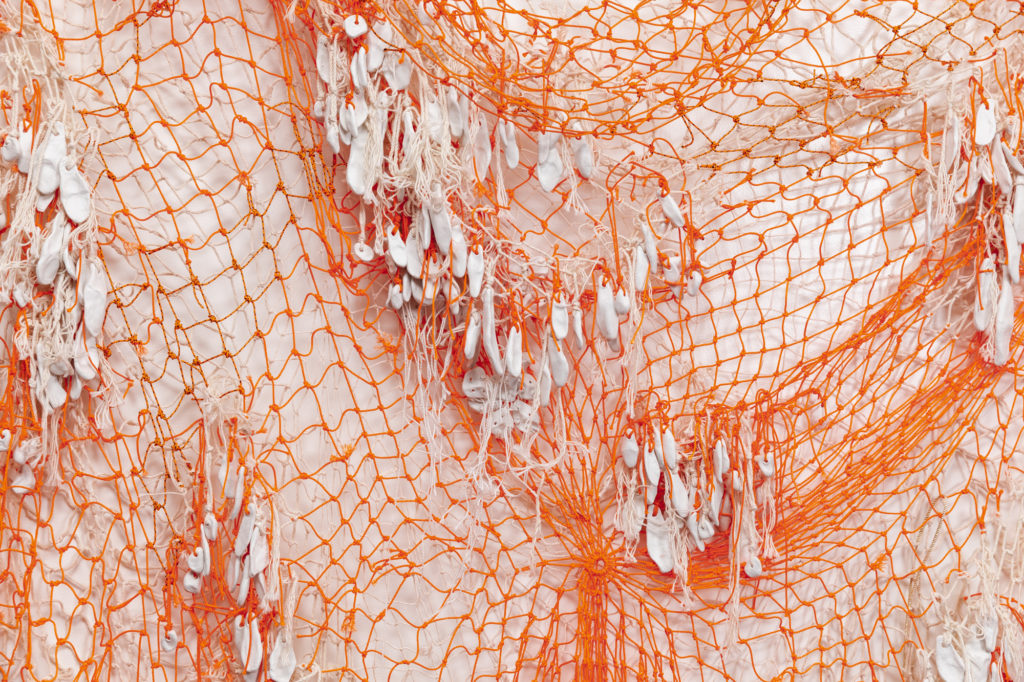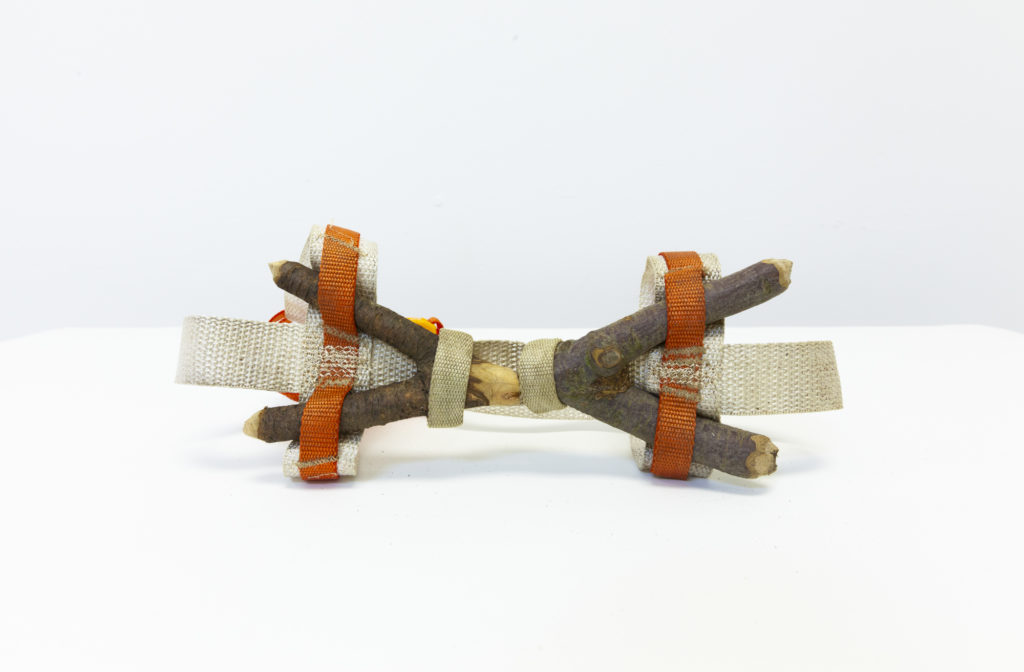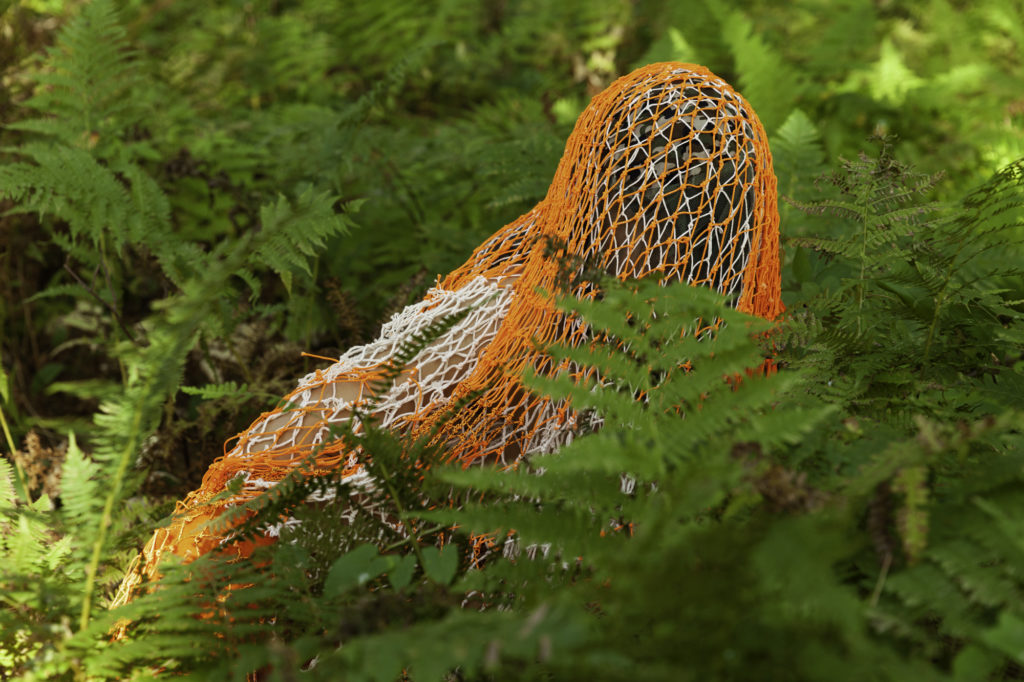 Mimi Bai & Sam B. Jones, Hide and See, 2022
Mimi Bai & Sam B. Jones, Hide and See, 2022 Mimi Bai & Sam B. Jones, Hide and See, 2022
Mimi Bai & Sam B. Jones, Hide and See, 2022As part of Mimi Bai: HIDE AND SEE | Curated by Amanda Contrada
Film Screening with Live Score
Saturday, Feb. 4, 2023 4:00pm | BCA Plaza Theatre
HIDE AND SEE is an experimental narrative film collaboration between Sam B. Jones and Mimi Bai that activates Bai’s clay and textile sculptures, transforming them into shrouds for two ghostly figures. The specters employ bushcraft and camouflage techniques as they pursue and evade one another across time and space, while the film shifts between black and white and color — alternately concealing and revealing the ghosts within their environment.
For this special screening, the film’s composer Zain Alam (Humeysha) will perform a blended live and recorded score, followed by a conversation with Mimi Bai, Zain Alam, and Sam B. Jones.
PLEASE NOTE:
Masks are required.
Watch the Trailer
Collaborators
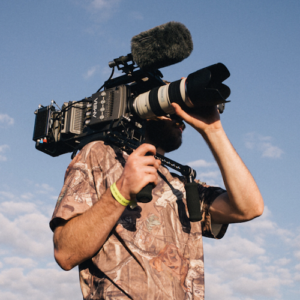
Sam B. Jones is a filmmaker working in narrative, documentary, and hybrid forms, who has directed films and music videos for artists such Josh Kline, Yung Jake, and DonChristian. His debut feature film ‘Red, White & Wasted’ (2019) is an observational documentary that explores race, politics, and class in America by following a Florida family obsessed with the off-road truck subculture of “mudding.”
Website: sambjones.com/
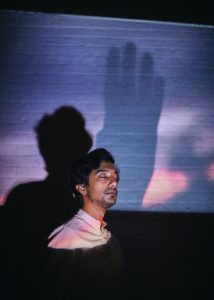
Zain Alam is an artist and musician of Indian-Pakistani descent. Described as “a unique intersection merging the cinematic formality of Bollywood and geometric repetition of Islamic art,” his recording project Humeysha soundtracks a diasporic consciousness coming of age in America.
Website: zainalam.com/
About the Exhibition
On view
December 16, 2022—February 18, 2023 ● Wednesday—Saturday | 1–6pm
BCA Mills Gallery, 551 Tremont St., Boston, MA 02116
Mimi Bai: HIDE AND SEE is the sixth exhibition in the 1:1 Curatorial Initiative series presented in the Mills Gallery at Boston Center for the Arts. Each exhibition in this series presents a collaborative project between one curator and one artist, and either introduces a new artist or highlights a new aspect of a more experienced artist.
In Mimi Bai: HIDE AND SEE, Bai contemplates camouflage as a metaphor for assimilation, a labor-intensive process, and a methodology for survival and communication that selectively conceals and reveals.
Camouflage involves making oneself invisible or hyper-visible, sometimes simultaneously. Bai draws parallels between this process and her experience of assimilation as an immigrant from China. She contextualizes this personal history within a historical and political framework that traces how capitalism and settler colonialism demand self-effacement in exchange for opportunity and a sense of safety.
Bai marks the unrecognized labor of assimilation using clay, ink, and string, as well as the encumbered movements of her body captured on camera. These repetitive and taxing actions make physical the often invisible and immaterial exertions required to “blend in” to one’s environment.
By abstracting fragments of her personal and familial history into patterns and forms, Bai has developed her own iconography that she employs throughout the works in the exhibition. A prominent example is the ghost, which emerged from a costume Bai wore as a child during her first Halloween in the US, then evolved through her research into ghillie suits — garments worn by snipers and hunters to conceal their bodies from an enemy or target.
The ghosts in the exhibition serve as avatars for the artist as she reflects on the shifting and conditional state of the alien and the marginalized. Across drawing, sculpture, and film, Bai re-imagines and enacts alternative perspectives on survival, adaptation, improvisation, and creative possibility.
